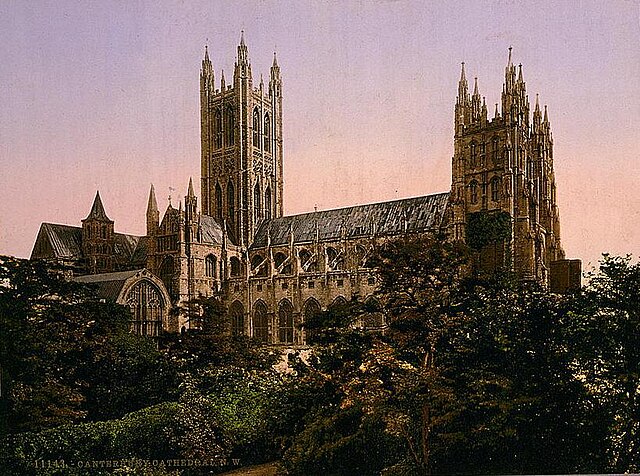"The Parson's Tale" seems, from the evidence of its prologue, to have been intended as the final tale of Geoffrey Chaucer's poetic cycle The Canterbury Tales. The "tale", which is the longest of all the surviving contributions by Chaucer's pilgrims, is in fact neither a story nor a poem, but a long and unrelieved prose treatise on penance. Critics and readers are generally unclear what rhetorical effect Chaucer may have intended by ending his cycle in this unlikely, extra-generic fashion.
Parson and Ploughman in a Danse Macabre
The Canterbury Tales is a collection of twenty-four stories that runs to over 17,000 lines written in Middle English by Geoffrey Chaucer between 1387 and 1400. It is widely regarded as Chaucer's magnum opus. The tales are presented as part of a story-telling contest by a group of pilgrims as they travel together from London to Canterbury to visit the shrine of Saint Thomas Becket at Canterbury Cathedral. The prize for this contest is a free meal at the Tabard Inn at Southwark on their return.
A Tale from the Decameron by John William Waterhouse
Canterbury Cathedral from the north west c. 1890–1900 (retouched from a black & white photograph)
Title page of Geoffrey Chaucer's Canterbury Tales in the hand of "Scribe B", identified as Adam Pinkhurst, c. 1400.
The Peasants' Revolt of 1381 is mentioned in the Tales.





